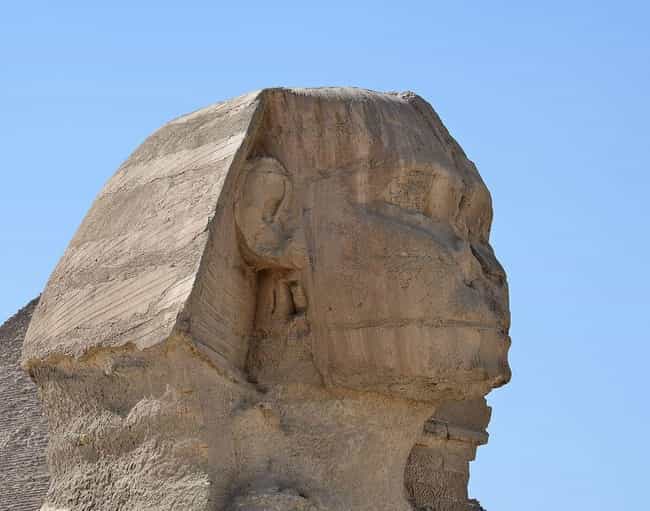
When we look at old ruins, we may be tempted to think that time steadily wears down structures in an implacable, vague way. Let enough years go by and any building will crumble to its foundations or at least show severe wear and tear.
It’s not necessarily true, though; some buildings and monuments have aged extremely well (check out the pristine 1800-year-old Pantheon in Rome, for example). Others, like the Colosseum or the Sphinx, look considerably more worse for wear – but it’s not just the ravages of time that partially destroyed them. People actually damaged them at specific moments in history. Sometimes we know exactly when and how it happened.
Read on if you ever wondered why the Sphinx is missing a nose, or whether the Parthenon got all messed up in WWII. Answers (and a few new questions) await!
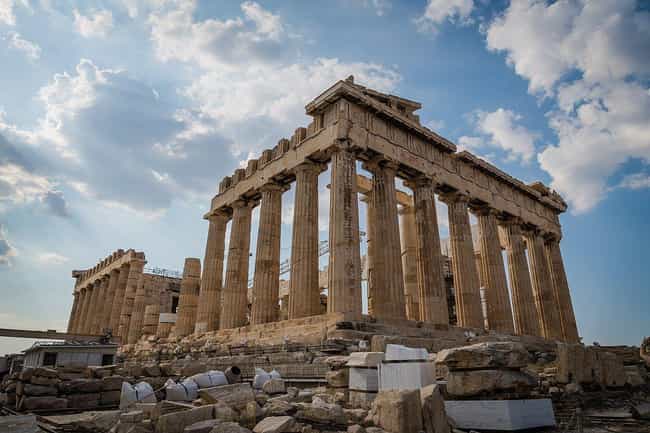
You might be forgiven for thinking that the Parthenon got its current battle-scarred look from WWII, but no: Athens fell to the Germans and Italians in 1941 without being bombarded.
The Parthenon is so badly damaged because of an event which occurred two-and-a-half centuries earlier, on September 26, 1687. A Venetian force led by Captain-General Francesco Morosini fired an artillery shell at Ottoman forces dug in on the Acropolis. The shell was a direct hit on the 2000-year-old temple. As if that wasn’t bad enough, the Ottomans had been using the Parthenon as a gunpowder depot. Massive damage ensued, forever scarring an irreplaceable cultural treasure.
Popular legend claims that Napoleon’s gunners – whether on purpose or accidentally – shot off the Great Sphinx’s nose during his 1798 campaign in Egypt.
But sketches of the Sphinx, made decades earlier, show the nose was already gone. The culprit may be a man named Muhammad Sa’im al-Dahr, who, according to 15th-century Arab historian al-Maqrizi, took out the nose in 1378 because he was enraged after seeing peasants making pagan offerings to the ancient statue.
A less-exciting explanation is that simple erosion did the job. But where’s the fun in that?
Everybody knows the White House was burned by British troops during their occupation of Washington D.C. in 1814, during the War of 1812. What’s less well known is that remnants of the conflagration still exist today.
The original sandstone part of the structure was not rebuilt, and many of the blocks bear visible scorch marks from that fateful day more than 200 years ago.
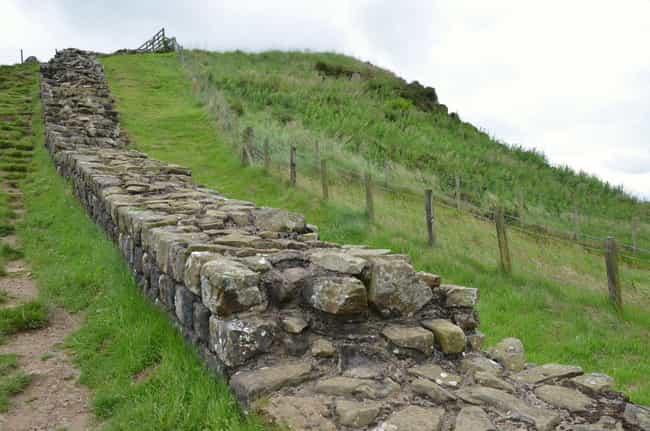
Hadrian’s Wall, built in the 2nd century CE to secure the northern frontier of the Roman Empire in the British Isles, is impressive for its length but otherwise not a terribly imposing structure these days. However, sources say it was once as much as 11 feet tall and 8 feet wide.
After the Romans left Britain, the Wall’s stone was used over the centuries by medieval Britons to build new structures. The stone, already cut, provided an easy resource for a population not particularly interested in historical preservation.
There are bits of Hadrian’s Wall all over the region, in buildings like St. Paul’s Monastery at Jarrow and Lanercost Priory. Not until the 18th and 19th centuries did the plundering stop, thanks to the efforts of conservationists like John Clayton.
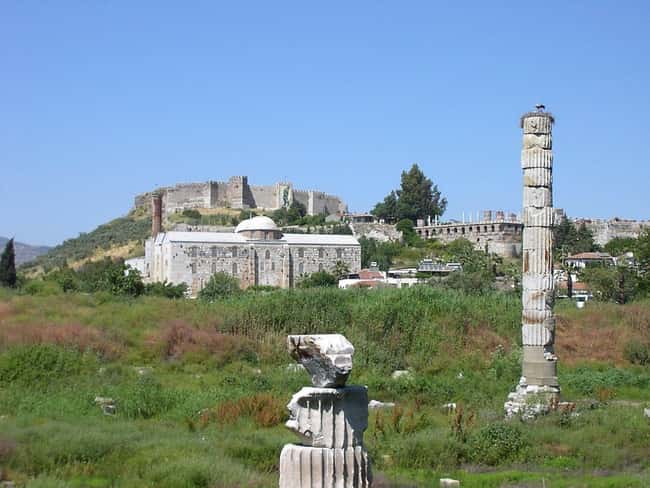
Of the Seven Wonders of the Ancient World, only the oldest – the Great Pyramid of Giza – still stands today. Of the others, some fell victim to earthquakes, but at least one – the grand Temple of Artemis at Ephesus (in modern-day Turkey) – was deliberately torn down.
The temple was actually destroyed and then rebuilt a few times. The last incarnation was built after a Gothic invasion destroyed the temple in 267 C.E. This version lasted until 401 C.E., when it was torn down by Christians fulfilling the wishes of recently-deceased Roman emperor Theodosius I, who had issued a decree against pagan practices.
All that remains now are some foundation ruins and sculptural pieces.
The Aztec Templo Mayor Was Torn Down By Spaniards Who Built A Cathedral With Its Stone
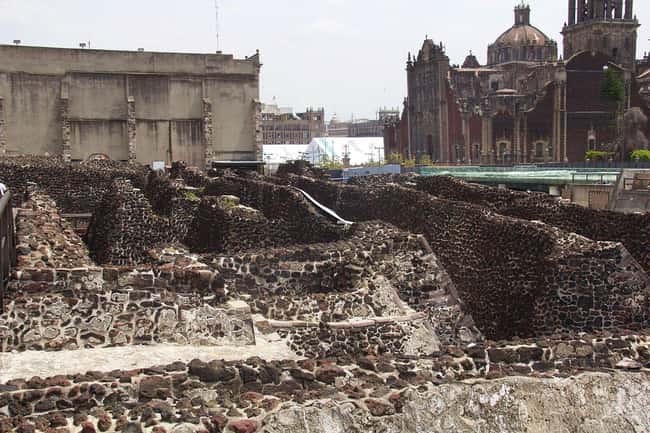
When Spanish conquistadores first beheld the Aztec capital of Tenochtitlán, they were astonished by its architectural splendor. Of course, that didn’t stop them from conquering the city, deposing the Emperor, and tearing down some of the most impressive Aztec monuments.
Chief among these was the Templo Mayor, a huge temple complex dominated by a massive step pyramid some 200 feet tall, where human sacrifice was performed on a nigh-industrial scale.
After the Battle of Tenochtitlán and the subsequent establishment of Spanish rule in México, the Spaniards used some of the Templo Mayor’s stone in constructing the nearby Cathedral of the Assumption of Mary, which still stands today. An archeological site and museum can be visited where the old temple once stood.
The Buddhas Of Bamiyan Were Blown Up By The Taliban In 2001
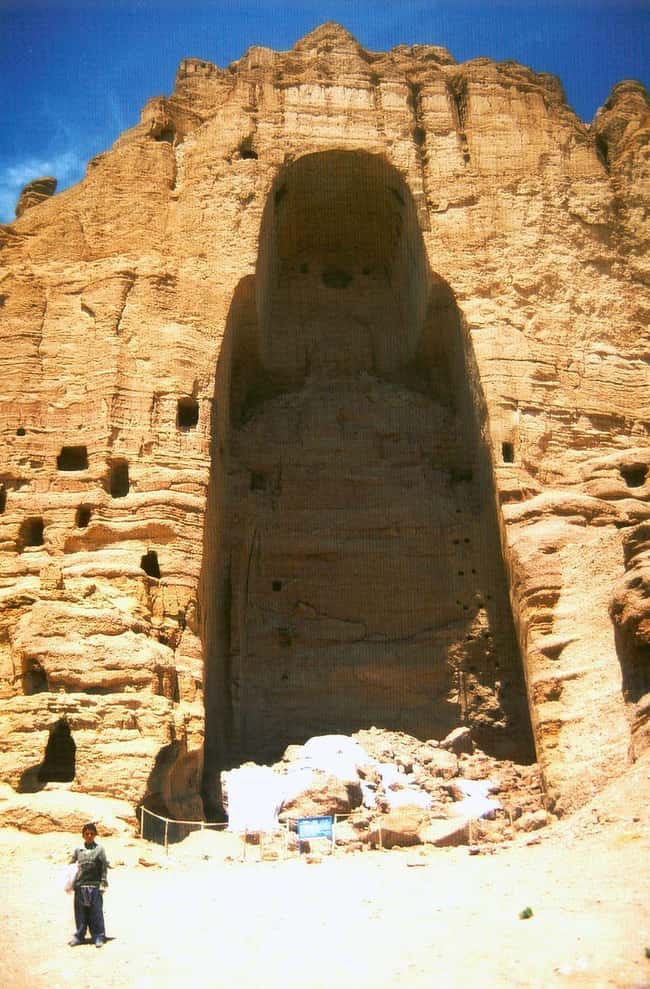
Though Afghanistan is now a predominantly Muslim country, its history is rich and multifaceted. Conquered by Alexander the Great in the 4th century BCE, Afghanistan was a key site of Greco-Buddhism, a variant of the Eastern religion which flourished in the Greco-Bactrian kingdom that was established in Alexander’s wake. Later, the Afghan town of Bamiyan lay on the legendary Silk Road, becoming exposed to cultural interchange between East and West.
It was here that, in the 6th century C.E., two massive statues of Buddha – among the largest ever made – were built. They survived for more than 1400 years, until, in March 2001, they were deliberately taken out with explosives by occupying Taliban forces, because their existence was seen by the Sunni Muslim leadership as a form of idolatry.
The destruction sparked an international outcry, but nothing could be done to prevent it. Now all that remains of the Buddhas of Bamiyan are the niches carved into the rock to house them.
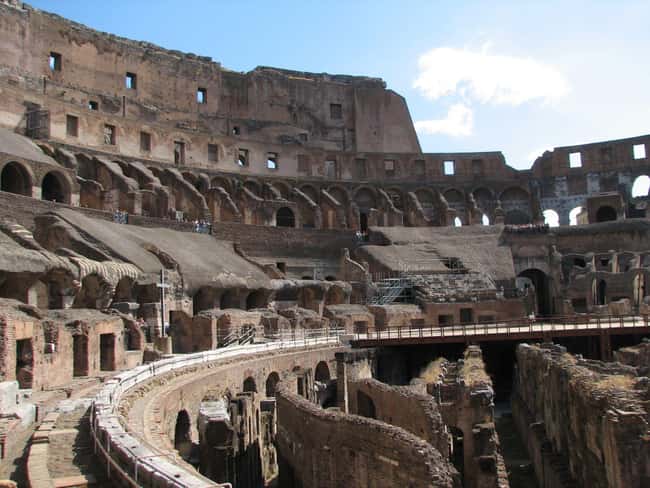
The Flavian Amphitheater, better known today as the Colosseum, was opened for business in the year 80 or 81, its inaugural Games lasting for months and featuring entertainments of tremendous splendor (and violence).
After the fall of the Empire in the 5th century (and with Europe’s rapidly expanding Christianization), gladiatorial games weren’t exactly a thing anymore. The last recorded gladiatorial exhibition at the Colosseum occurred in 404, and the last staged animal hunt (venatione) in 523.
As is often the case with ancient structures, the Colosseum became an awfully tempting source of construction materials. This was exacerbated by two major earthquakes, in 847 and 1231, which shook loose large quantities of the building’s stones. Loath to let good stone go to waste, medieval and Renaissance Romans repurposed the materials for new structures, including the steps of St. Peter’s, the Palazzo di Venezia, and others.
An Egyptian Obelisk Cracked During Construction And Was Left In The Quarry For 3500 Years
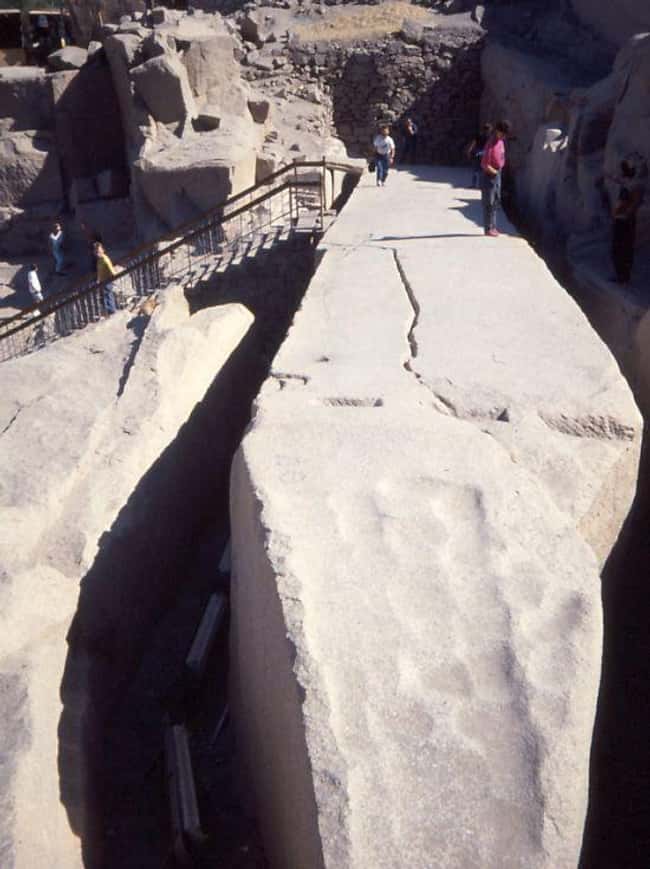
The city of Aswan, along the Nile in Southern Egypt, is home to a number of ancient stone quarries where the Egyptian pharaohs had many of their monuments constructed. Particularly striking is the Unfinished Obelisk, which was abandoned where it lay thousands of years ago because a large fissure was discovered near its center.
Evidently commissioned by the female pharaoh Hatshepsut, the Obelisk would have stood 137 feet tall – more than 30 feet taller than the highest extant ancient obelisk, the Lateran Obelisk in Rome. But because of that crack, innumerable hours of backbreaking labor had to be abandoned.
The Serapeum of Alexandria Was The Site Of Urban Warfare Between Christians And Pagans
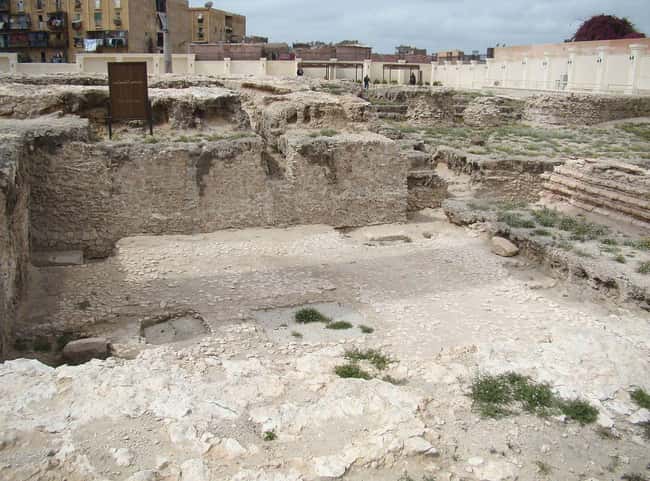
Once a splendid temple complex that included an annex to the famous Library of Alexandria, the Serapeum was one of the most high-profile victims of the Christian/Pagan conflicts that raged across the declining Roman world in late antiquity.
In 391, after riots following an anti-pagan edict by Theodosius, the patriarch of Alexandria, the temple became the site of a kind of urban warfare. The city’s pagans barricaded themselves inside the Serapeum, and a mob of Christians (that may or may not have been aided by Roman soldiers) stormed the place. In the end, the temple was completely demolished; the only above-ground part that survives is a 100-foot-tall column known as Pompey’s Pillar.
–
(For the source of this, and many other equally intriguing articles, please visit: https://www.ranker.com/list/how-famous-monuments-were-damaged/gordon-cameron/)









